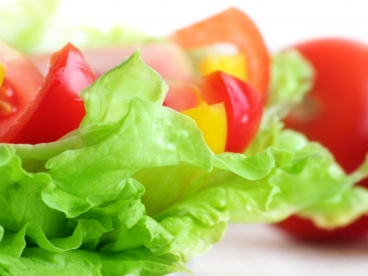
When it comes to getting many of the vitamins essential to human life, vegans win. Fruits, veggies, nuts and seeds are packed with these fabulous micronutrients so vegans, by definition, consume a lot of them. There are studies indicating vegans average a vitamin C intake that’s 50% higher than non-vegetarians. Folate checks in at 20% to 50% higher. So unless you’re one of those misguided vegans who sustain themselves on potato chips and Mr. Pibb, you’re mostly good.
“Mostly?” you mutter. Yes, there are a couple standout vitamins that all the apples and almonds in the world aren’t going to help you with: vitamin B12 and vitamin D. The easiest way to get both of these essential nutrients is from animal products – but you don’t play that way. Luckily, there are ways of getting around this dilemma.
Vitamin B12. When vitamins were first discovered, researchers assumed there were two kinds: fat-soluble vitamins, which they called vitamin A; and water-soluble vitamins, which they called vitamin B. When they discovered that there are more than those two, they came up with vitamins C, D, E, et al. However, to make things more complex, they realized that, even after this alphabetical expansion, Vitamin B was still several different vitamins. To correct this, they subdivided B into the B complex: B1, B2, B3, and all the others, including our friend vitamin B12, also known in fancy circles as cobalamin due to the fact that it contains cobalt and nitrogen atoms.
B12 plays a vital role in our energy metabolism, meaning it’s essential for breaking down the nutrients we eat into cellular energy. Insufficient vitamin B12 intake can lead to a form of anemia with symptoms including fatigue, difficulty sleeping, memory loss and other brain malfunctions.
While primary sources of B12 include meat, fish, and dairy, it doesn’t actually originate from these products. In fact, it comes from bacteria and fungi that the animals being eaten have consumed. Back in the old days, you could get non-animal B12 more-or-less by accident, from the dirt on unwashed foods or from foods like sauerkraut or tempeh that had been fermented in less-than-sterile, bacteria-rich environments. In this day and age, this is a bit risky just for a cobalamin, so you’re better off either eating fortified foods or investing in a good multivitamin.
If you’re like me, you may lean towards whole grains and fresh-squeezed juices. This limits your exposure to fortified (and refined) grains as well as mass-produced cartons of OJ, so you’re better off with the daily multi.
The RDA for vitamin B12 for adults is 2.4mcg or 2.6mcg if you’re pregnant. There’s no tolerable upper intake level because B12 is water-soluble, so you’ll just pass it in your urine if you take too much.
Vitamin D. This one is tricky. Yes, you can get it from sunshine. Yes, you can get it from fortified foods. But both of these strategies are rife with complications. D is crucial in calcium absorption. In other words, you can consume calcium until you moo, but it’s not going to do much for your bones if you’re not getting enough vitamin D. It also plays an important role in cell growth.
Technically, the body will make its own D if you get enough sunshine – about 15 minutes, three times a week. Unfortunately, a rather exacting set of parameters needs to fall into place for this to happen properly. Sunscreen blocks D absorption, as does clothing and the melanin found in darker skin. Vitamin D accessibility is also dependent on geography, time of year, and time of day. Basically, the best times to sun tan (and sun burn) are also the best times to soak in the sunny D. Given many of us are concerned about skin damage and cancer, this can be problematic.
If you’re absolutely determined to get your vitamin D from sunlight, an ultraviolet sunlamp might be a good option.
If you’re taking the dietary route, animal products are out of the question. Some plants produce vitamin D, but you’re limited to a few mushrooms, including shitake; some seaweed, including kelp; and some yeast. Your best bet is fortified foods – but you need to read the label. Plant-based vitamin D is D2, or ergocalciferol. Animal-based vitamin D is D3, or cholecalciferol. Consult the nutrition facts on your box of Über Organic Sprouted Flax Bran. If the vitamin D comes from cholecalferol, you’re eating animals. Weird, huh? I even know a few carnivores who might question eating meat-based cereal.
If you get plenty of sunshine every day, you’re probably okay without vitamin D supplements, but it’s recommended that you still take 200 IU, just to be safe. Once you hit age 50, jump up to 400 IU. At 70, consume 600 IU. Vitamin D toxicity is rare, but you should stay below 2000 IU, just to be safe. It might take a little mindfulness, but you can get all the micronutrients a body needs and still stay cruelty-free. So grab yourself a sunlamp or a good multivitamin. It’s time to declare vegan vitamin victory!
By Denis Faye • January 12th, 2012




